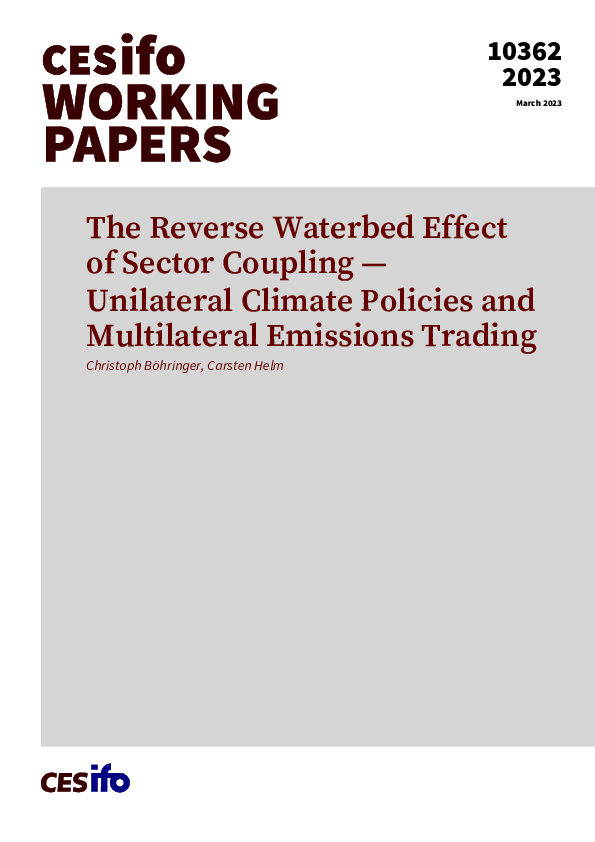The Reverse Waterbed Effect of Sector Coupling — Unilateral Climate Policies and Multilateral Emissions Trading
CESifo, Munich, 2023
CESifo Working Paper No. 10362

It is widely acknowledged that the transition towards a zero-emissions economy requires electrification of energy-related processes across all sectors of the economy — so-called sector coupling. In our analysis we consider countries whose electricity sectors are regulated by a multilateral emissions trading system (ETS). We examine the implications of a unilateral CO2 tax by a group of countries on emissions in their transport and buildings sectors. The tax induces a switch to electricity-based technologies (e.g., electric vehicles and heat pumps), thus raising the demand for emission allowances and their price in the electricity sector. This induces emission reductions in the electricity sectors of the other countries covered under the ETS; hence we have a “reverse waterbed effect”. CO2-intensive electricity generation technologies, especially coal, are most affected by this and their output falls as a result of sector coupling. Subsidies for electricity-based technologies in the transport and buildings sectors have similar effects, and the main insights still hold if these sectors are governed by a separate ETS, as it is planned for the EU. We examine this in a stylized analytical model and use a computable general equilibrium model calibrated to data for the EU to quantify the effects. Moreover, for the case of a second ETS, our numerical results suggest that the unilateral cancellation of emission allowances in the power sector leads to substantially higher welfare losses than doing so in the transport and buildings sectors.